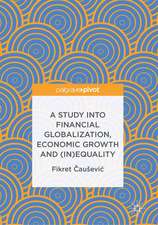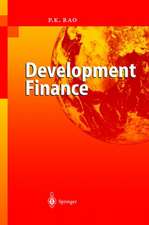Carbon Markets: Microstructure, Pricing and Policy
Autor Gbenga Ibikunle, Andros Gregoriouen Limba Engleză Hardback – 8 mar 2018
| Toate formatele și edițiile | Preț | Express |
|---|---|---|
| Paperback (1) | 940.57 lei 6-8 săpt. | |
| Springer International Publishing – 12 ian 2019 | 940.57 lei 6-8 săpt. | |
| Hardback (1) | 945.79 lei 6-8 săpt. | |
| Springer International Publishing – 8 mar 2018 | 945.79 lei 6-8 săpt. |
Preț: 945.79 lei
Preț vechi: 1153.39 lei
-18% Nou
Puncte Express: 1419
Preț estimativ în valută:
180.98€ • 186.71$ • 151.03£
180.98€ • 186.71$ • 151.03£
Carte tipărită la comandă
Livrare economică 27 martie-10 aprilie
Preluare comenzi: 021 569.72.76
Specificații
ISBN-13: 9783319728469
ISBN-10: 3319728466
Pagini: 252
Ilustrații: XVI, 234 p. 10 illus.
Dimensiuni: 148 x 210 mm
Greutate: 0.45 kg
Ediția:1st ed. 2018
Editura: Springer International Publishing
Colecția Palgrave Macmillan
Locul publicării:Cham, Switzerland
ISBN-10: 3319728466
Pagini: 252
Ilustrații: XVI, 234 p. 10 illus.
Dimensiuni: 148 x 210 mm
Greutate: 0.45 kg
Ediția:1st ed. 2018
Editura: Springer International Publishing
Colecția Palgrave Macmillan
Locul publicării:Cham, Switzerland
Cuprins
1: Introduction - A descriptive and critical analysis of the key emissions trading schemes around the world.- 2: Econometric Approaches in Carbon Markets.- 3. The Impact of Large/Block Trades on the Price Discovery Process.- 4: Short and Long-term Liquidity Effects.- 5: Liquidity and Market Efficiency in Carbon Markets.- 6: Price Slumps and Policy.- 7: Conclusion.
Notă biografică
Gbenga Ibikunle is an Associate Professor of Financial Markets at the University of Edinburgh, UK and a Fellow at the Capital Markets Cooperative Research Centre, Australia and the University of St. Andrew's Centre for Responsible Banking and Finance, UK. He has also held visiting research positions with the UK’s financial markets regulator, the Financial Conduct Authority, and several leading universities around the world. Gbenga’s work on the microstructure of financial markets are regularly cited in publications/articles by market regulators and the leading international financial economics news media. His papers have been published extensively in internationally recognised finance, economics and management academic journals.
Andros Gregoriou is a Professor of Finance and the Head of the Economics and Finance Division of the Business School at the University of Brighton, U.K. Andros has held senior academic positions in various academic institutions throughout his career including the University of Hull, Brunel University, and the University of East Anglia, U.K. A leading authority in finance, he has published a significant number of research papers in internationally recognised journals and generated over £5 million in research funding. He is a regular consultant for the CFA and the London Stock Exchange.
Andros Gregoriou is a Professor of Finance and the Head of the Economics and Finance Division of the Business School at the University of Brighton, U.K. Andros has held senior academic positions in various academic institutions throughout his career including the University of Hull, Brunel University, and the University of East Anglia, U.K. A leading authority in finance, he has published a significant number of research papers in internationally recognised journals and generated over £5 million in research funding. He is a regular consultant for the CFA and the London Stock Exchange.
Textul de pe ultima copertă
This book explores the microstructure of carbon markets and the pricing of carbon financial instruments generally. It provides a critical microstructure analysis of the EU Emissions Trading Scheme (EU-ETS), and also examines the theoretical and related market design issues affecting emissions trading schemes. Individual chapters analyse how intraday pricing evolves in carbon markets, the price impact of block trades in carbon financial instruments and their determinants, short and long-term liquidity effects in carbon markets, and the links between carbon market liquidity and efficiency. The aforementioned issues are explored using case studies of two major trading platforms operating within the EU-ETS. The book concludes by focusing on future policy and regulatory challenges in carbon markets, especially with respect to addressing pricing volatility challenges.
Caracteristici
Explores the market microstructure of carbon markets Analyses the pricing of carbon financial instruments Features a case study of a major EU-ETS trading platform Features policy recommendations for improving the pricing of carbon financial instruments
















